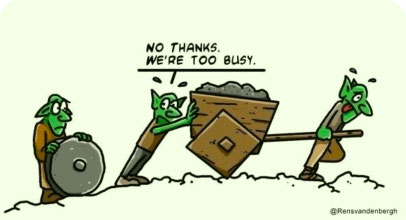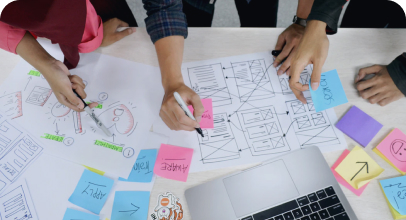
Surely your team has been in a situation when they hit the dead end and face a challenge. Or during a retrospective one issue discussion takes too long, so avoid time you will schedule another meeting. In this case, the brainstorming session has proven to be the saviour. Put your heads together, even when you’re miles apart to tackle any challenge you meet during a proper brainstorming session.
5 rules for conducting effective brainstorming:
- State the problem clearly as everyone should understand what you are trying to achieve.
- Generate as many ideas as possible. Quantity over quality at this stage, limits are of no use here.
- Withhold criticism at the stage of generating ideas. You’ll have a chance to do it later, ideas assessment and discussion should follow as the separate step of the session.
- Welcome any kind of weird and even absurd ideas, expand boundaries to get fresh input.
- Combine, refine and improve ideas in any way for better results.
Once you and your team feel comfortable about the rules and process you can select the template for the brainstorming session. Different templates help to look at the problem from different perspectives.
Brainwriting
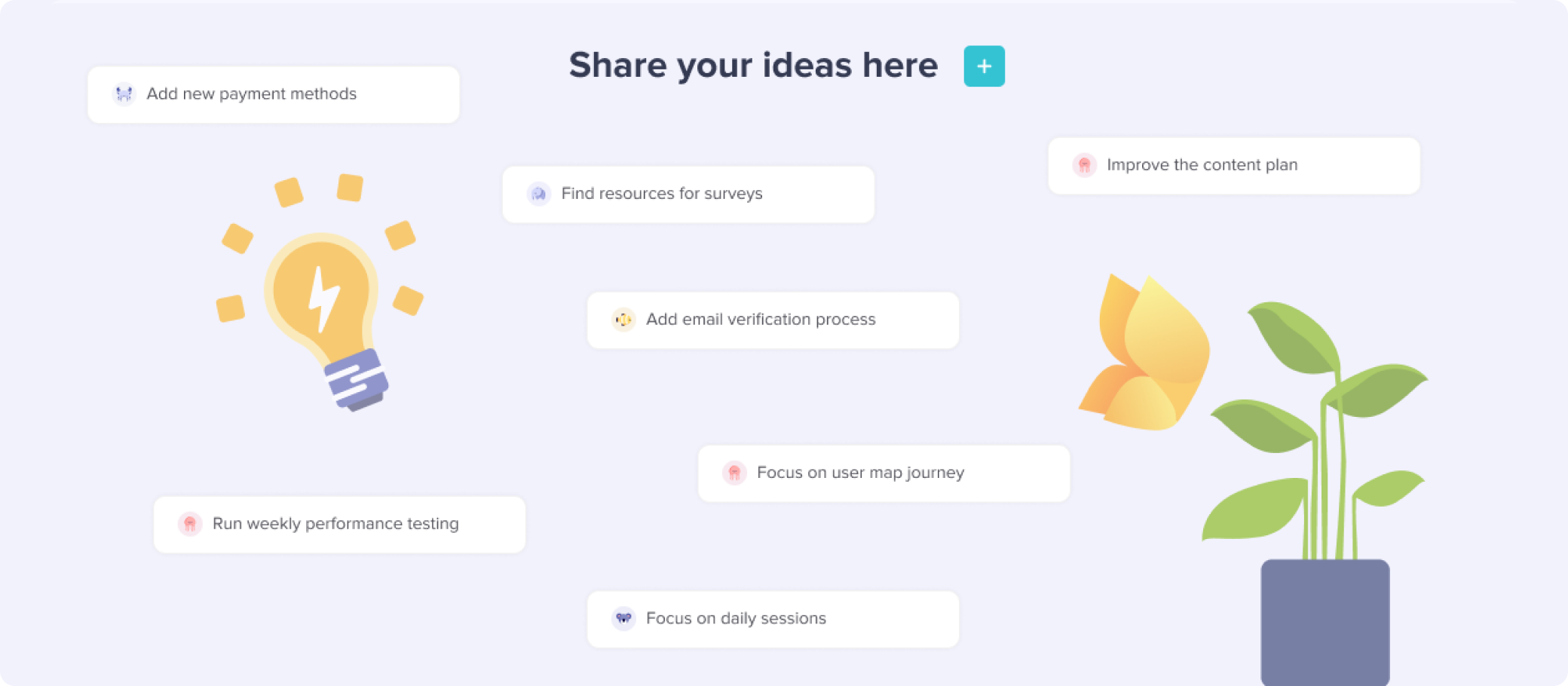
The easiest exercise you can start with, but like typical brainstorming where a group works together, brainwriting is an individual work activity followed by group collaboration. It works well for introverts or newbies as they can be a way to source a lot of ideas, also it works well with a lot of participants to generate the ideas separately first, discuss them together, vote for the best ones and create the action points based on the most valuable items.
Problems. Ideas. Solutions
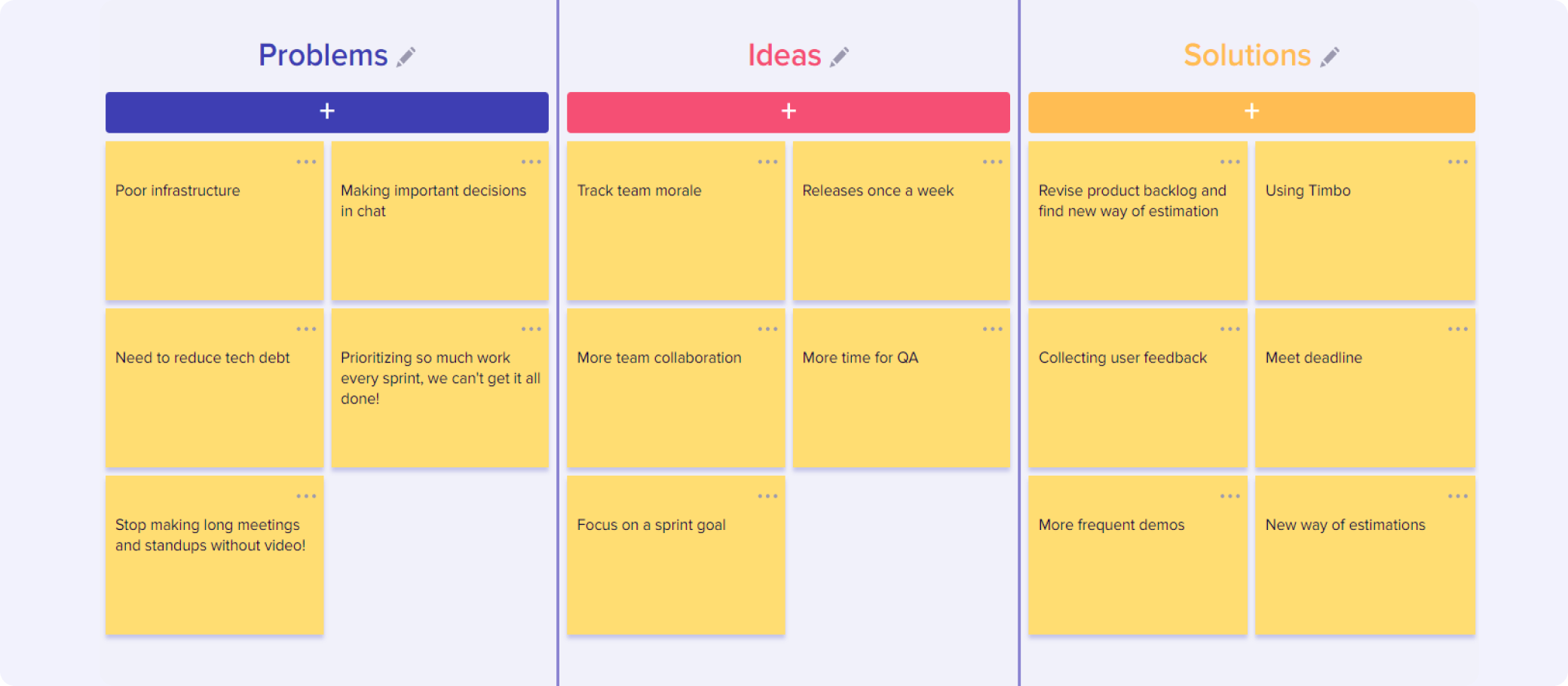
Common exercise that helps to conduct a brainstorming flow from the point of problem statement till the Action Points generation.
- Use the Problems column to write down existing problems. Try to focus on several ones and avoid creating a long list;
- Based on the problems provided think of Ideas to deal with them;
- Finish the brainstorming with the Solutions — actionable points & features to be implemented (solutions are to be built upon the ideas).
How. Now. Wow
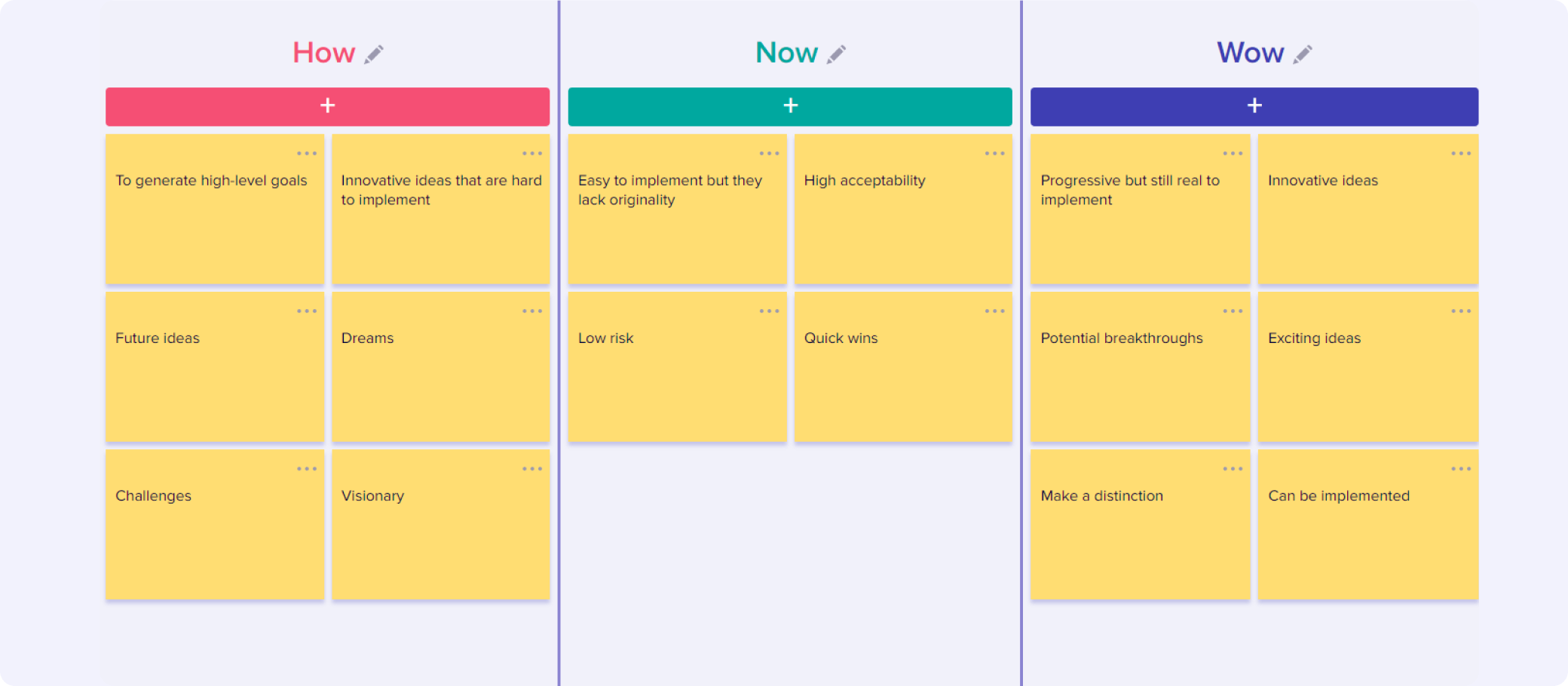
A great exercise that can help you inspect the solutions from the point of their complexity and originality:
- How collects the innovative ideas that are hard to implement, but can be used to generate high-level goals;
- Now column is for the ideas that are easy to implement but they lack originality;
- Wow column is the one that you’re looking for, it’s for ideas that are progressive but still real to implement.
SWOT analysis

A very powerful technique that can be used for a number of cases starting from strategic planning for a company to estimating the ideas before implementation:
- Defining Strengths will give you insights of positive results;
- Discussing Weaknesses will help you understand the negative/complicated points of an objective you are trying to achieve;
- Opportunities is something to pay special attention to, an area for improvement (just make sure it connects with Strengths);
- Threats — something that might influence in a negative way and requires preventive measures.
In conclusion, you can see there are several ways to resolve even the hardest problems and answer the most difficult questions. These ways have proven to be helpful if you follow the rules, stay focused on the issue and don’t limit yourself and your team with ‘not possible’ attitude.
Timbo: designed by Scrum Masters for Scrum Masters
 Nadzeya Rynkevich
Nadzeya Rynkevich



